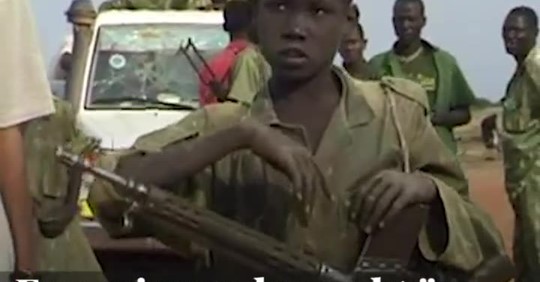Since September 5th, the prosecutors have guided the court through a whopping 80.000 pages of written evidence. Strictly following the structure of indictment, they have made a painstaking effort to demonstrate that the Sudanese Government’s method of warfare included systematic war crimes and that Ian Lundin and Alexandre Schneiter were aware of this, but nevertheless demanded the Government of Sudan to secure their operations, with dire consequences for the population. The prosecutors zoomed in on eleven specific requests for security by the suspects and on five protracted military offensives by Government forces, going a long way to show causal connections between them.
The prosecution has until now only presented written and audio-visual evidence. From May 2024 until September 2025, 32 South Sudanese plaintiffs and 38 expert witnesses will be called to share their knowledge and experiences, followed by 19 former employees and one former board member of Lundin.
But first, the defense lawyers have the floor from 29 November until 25 April 2024. They announced that they will challenge each component of the prosecutor’s case, including that the Sudanese Government committed war crimes or controlled abusive local militias, that the suspects have asked for any military offensives, that they had decisive influence over security matters within the company, that the alleged five military offensives were connected to Lundin’s security needs, or that there had been any connection between Lundin’s operations and warfare at all.
The prosecutors did not claim that Lundin explicitly requested the Government to attack civilians, but that the Government led military attacks to create conditions for Lundin to carry out the work plans that it shared with the Government. They painted the picture of a business operation that depended military operations by presenting a lot of circumstantial evidence that the Government’s military offensives were responses to Lundin’s work plans and security requests. It will be a challenge for the suspects to refute that their company’s interests were a defining factor in the war that was going on around them.
Here is a quick impression of the kind of evidence that the prosecutors presented for Lundin’s role in alleged military offensives re the building of a road to the small town of Nhialdiu. Nhialdiu was a relatively prosperous place with app. 25.000 inhabitants and was recurrently used as a stronghold by the norotious militia commander Peter Gatdiet. Lundin’s work plans since 2000 included seismic surveys nearby Nhialdiu.
The prosecutor quoted a Lundin’s security report from 18 January, 2001, that “The main threat is coming from the west, where Peter Gadet operates. Large forces are believed to be deployed there, and although it is not in the [Lundin’s] area, [they] are there solely to ensure that Block 5A […] is secure.” They argue that this shows that military’s presence in and around the Block was intended to provide security for Lundin’s operations and that the company as aware of this.
In order to fulfill their obligation to provide security for Lundin’s proposed activities in Nhialdiu, the Government demanded that Lundin finance an all weather road. An internal report from Lundin of 28 October 2001 reads: “Army are requesting a road to Nhieldu before they can put security in place for shooting lines on MOKJ lead …”. This, so the prosecutors argues, shows that the road to Nhialdiu was intended for military use in order to serve Lundin’s interests. On 15 November, Lundin’s head of security wrote in an internal memo: “The Army is moving their forces south of Thar Jath to secure our operations.” According to the prosecutor, this indicates that Lundin was aware that the Army conducted military offensives on its behalf in areas where Lundin was not itself present. The prosecutor also quoted an internal document, “Sudan update”, for 11-17 December 2001: “SO reported on 12th December that SSUM and SSIM [two militias that were allied with the Government at the time] have carried out a joint operation and taken over the village of Nhieldiu. The village was previously held by Gadiet’s forces who have now been driven off to the South-west of the village. Comment. Gadiet is still a threat, however, this success, however temporary, will provide additional security for the AWR [all weather road] as long as the SSUM/SSIM occupy the area.” The quotations would indicate that Lundin was aware that Nhialdiu was attacked to secure the road that Lundin intended to finance in its own interest. Furthermore, the labelling of Peter Gatdiet’s forces as a threat would indicate that Lundin did not consider itself as a neutral party in the war.
On December 1st 2001, the internal security update of the Canadian oil company Talisman Energy, that was active in an adjacent area, reads: “The road to the Nhialdiu area will be very contentious. (…) it will greatly help the security of the area when complete, but there will likely be plenty of “incidents” to get that point.” Evidence was presented that during the firsts months of 2002, tens of thousands of people were attacked and violently displaced from Nhialdiu and surroundings due to offensives by the Army, allied militias, and irregular Arab forces from the Baggara tribe.
In this context it was interesting to listen to Carl Bildt’s report to the management of Lundin on 11 February 2002, in which he wrote that oil prospecting was a factor in the civil war and that the Government systematically attacked civilians.
The prosecutor also pointed to Ian Lundin’s letter of 22 March 2002 to the Ministry of Energy: “I am glad to confirm to you that the parties to the Block 5A EPSA have now unanimously agreed that the construction of …the Jarayan to Lehr and the Kilo 7 to Mok roads [the road to Nhialdiu] should proceed …” The prosecutor alleges that Ian Lundin and Alexandre Schneiter’s company agreed to finance the road to Nhialdiu, knowing that Sudanese Army and allied militias violently dislodged Peter Gatdiet’s forces from Nhialdiu and drove off its population to allow for the building of the road. Finally, the prosecutor presented daily internal security briefings from Lundin reporting sustained military operations against “the rebels” in relation with road construction after March 2002, as well as satellite image analysis showing a dramatic decrease in agricultural land use around Nhialdiu.
The above is a tiny part of the evidence about Lundin’s role in attacks on Nhialdiu, which itself is only one of five offensives that the prosecutors allege that Lundin has aided and abetted. All evidence combined is intended to show a ‘ladder of complicity’ that should be sufficient to pass the “reckless intent” threshold for criminal responsibility.
For excellent weekly trial reports, see www.crd.org. The podcast series Lundin Ware Crimes Trial is available on Spotify and Apple Podcasts and in your podcast app.



